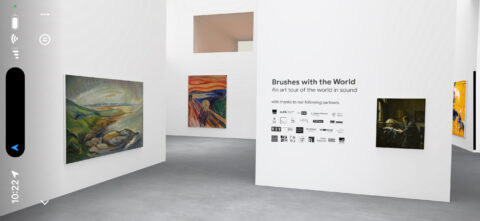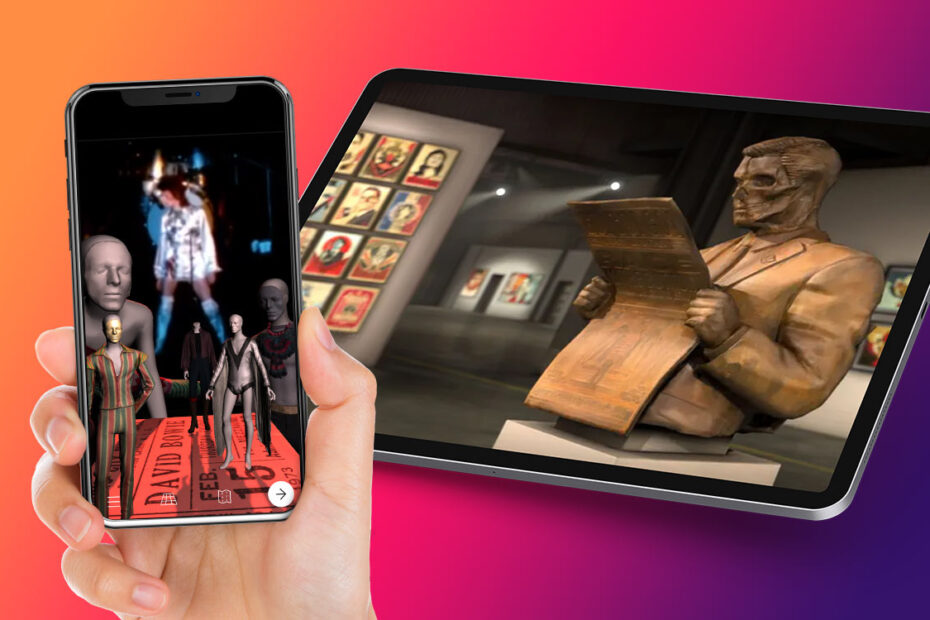The future of culture should be simultaneously more accessible and more respectful of every artifact’s past
Picture the scene: London, during Easter school vacation. A family day out, which starts well on the London Eye, but then heads to the Science Museum. There’s relief on walking past colossal queues snaking from the nearby Natural History Museum, with its new Titanosaur exhibit. But on entering the Science Museum, massive crowds are everywhere.
It’s hard to navigate the museum. Hot. Lots of stairs. An eight-year-old’s patience rapidly evaporates as a distinct lack of available interactive exhibits becomes clear, and the crowds make the experience claustrophobic. That was my reality check this April – one that subsequently made me think about digital museum experiences I’d had, and how technology could revolutionize the museum experience for the better.
Culture in the palm of your hand
Regardless of how you frame culture, there’s always a level of access that’s easy to take for granted. For any museum trip, you need suitable time, health, and money. With digital, there’s the requirement to have a device – and even the cheapest iPhone is too expensive for many. But approach this space in the abstract – realizing far cheaper smartphones and tablets exist than Apple’s – and the future for access to culture looks very interesting.

A ‘pocket gallery’ in the Google Arts & Culture app.
It had been a while since I’d explored Google Arts & Culture (free), and my memory of it was hazy. But on revisiting it, I found a quite astonishing experience, packed with stories about art and inventions. Tap the camera button and you can use AR (augmented reality) to hang virtual paintings on your wall, or even open a virtual ‘pocket gallery’ you can walk around to explore – or more rapidly navigate by tapping objects to jump right up to them.
Google isn’t alone in this space. Artists are represented by the likes of The Dali Museum (free), Shepard Fairey AR – Damaged (free), and David Bowie is ($9.99/£9.99), each replicating real-world cultural spaces in their own way.
Objects of desire
There are digital takes on museums in other fields, which also go beyond more typical museum apps that limit themselves to being little more than maps and ticket machines. Journeys of Invention ($9.99/£9.99) reimagines London’s Science Museum as a series of interconnected pathways. Part book, part photo album, it’s dotted with interesting interactive elements that bring out the richness of the objects on display. The BBC’s Civilisations AR (free) is simpler in design, but nonetheless allows you to explore over 30 artifacts in 3D and AR, including the Rosetta Stone and an Egyptian mummy.

Culture at your fingertips in the Civilisations AR app.
Digital versions of physical spaces offer many benefits. The Shepard Fairey and David Bowie exhibits were moments in time, which relied on you being there; but they can now be enjoyed by anyone. And while the objects in Civilisations AR are still available to view, doing so would require you visit a large number of locations.
Opportunities for change
There are other positives to digital museums beyond accessibility, most notably regarding artifact ownership. Increasingly, museums are being encouraged to return items that were taken from their original homes. Digital recreations could mean people in countries where such objects had resided for years would still be able to access and enjoy them – and that access would be widened to the entire planet, while the original objects would be carefully returned to their countries of origin.
Of course, there will always be a place for the physical. Even in full VR, there’s an argument that standing before an Apollo capsule, dinosaur fossil or Rothko lacks the impact of the real thing. But AR and smartphones like iPhone undoubtedly widen access and learning, and provide great opportunities for museums to expand reach and messaging. Such organizations should grasp this eagerly, ensuring culture points as much to the future as it does to the past.

